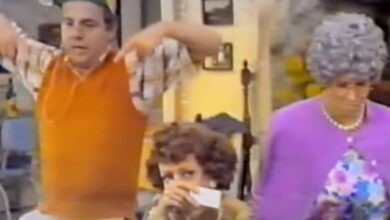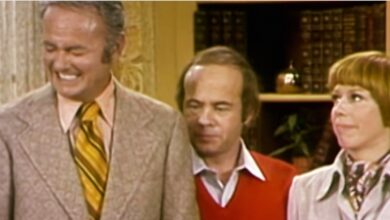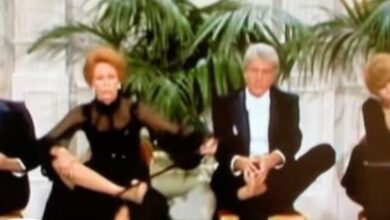The Everly Brothers’ ‘Cathy’s Clown’ Reshapes Pop and Country Boundaries with a 1960 Chart-Topping Crossover Breakthrough
In 1960, the Everly Brothers released what would become one of the most influential and best-selling singles of their career—“Cathy’s Clown.” Debuting to immediate acclaim, the song rocketed to No. 1 on the Billboard Hot 100, where it remained for five consecutive weeks, a rare feat at the time. Blending country harmonies with pop production and subtle rock ‘n’ roll undertones, “Cathy’s Clown” was both a commercial smash and a stylistic revelation. It marked the duo’s first release under Warner Bros. Records, and the success of this single alone justified their groundbreaking $1 million contract with the label—then the most lucrative deal in music history.
Don and Phil Everly were born into a musical family, with roots in Kentucky and a foundation built in the world of country radio. Their father, Ike Everly, was a respected guitarist and radio host, which meant the brothers were performing together from a very young age. What set them apart from their contemporaries was their seamless, close vocal harmony—two voices that sounded as one. Their upbringing in traditional country music, fused with a natural feel for the evolving pop and rock sounds of the 1950s, made the Everly Brothers a bridge between genres. By the time “Cathy’s Clown” came along, they were already established hitmakers, but this song elevated them into a different echelon entirely.
The inspiration for “Cathy’s Clown” reportedly came from the pain and pride wrapped in post-breakup humiliation. While the lyrics suggest a simple story of heartbreak, Don Everly explained that the emotional root of the song was the desire to stand tall after rejection—not to be made a fool again. Though the titular “Cathy” may not have been drawn from a specific person, the universal feeling of loss and ego bruised by love resonated with audiences across age and gender. Don and Phil composed the song themselves, a fact that further set them apart in an era when many performers relied entirely on outside writers.
Recorded at RCA Studio B in Nashville under the direction of producer Wesley Rose, “Cathy’s Clown” featured a unique sonic blend that contributed greatly to its success. The recording was notable for its use of a double-drum beat—an innovation at the time—that gave the song a marching rhythm, supporting the lyrical theme of standing one’s ground. The vocal arrangement was equally groundbreaking, with Don and Phil’s harmonies overlapping in a cascading structure rather than the more conventional call-and-response format. That cascading harmony would go on to inspire generations of musicians across multiple genres.
Upon release, “Cathy’s Clown” quickly took over the airwaves. It not only held the No. 1 position on the U.S. charts but also became the Everly Brothers’ biggest U.K. hit, where it topped the British charts for seven weeks. The song sold over eight million copies worldwide, cementing its status as a global phenomenon. It earned critical acclaim for its tight production and emotional punch, and it gave Warner Bros. Records its first No. 1 single—paving the way for the label’s later dominance in pop music throughout the 1960s and beyond.
Culturally, the song marked a shift in how heartbreak was portrayed in male-led pop music. Instead of exuding cool detachment or swagger, “Cathy’s Clown” delivered vulnerability wrapped in defiance. This subtle emotional complexity influenced a wave of young male performers who realized they could express pain without sacrificing strength. The song’s hybrid genre styling also opened doors for other artists who sought to break free of rigid musical classifications. It was a precursor to the folk-pop boom and influenced early Beatles compositions with its harmonic richness and rhythmic balance.
The impact on the Everly Brothers’ career was immediate and enormous. “Cathy’s Clown” reestablished them as dominant chart forces after a short lull, and it gave them leverage in their new relationship with Warner Bros. The track’s massive success led to more ambitious recording sessions, greater international touring opportunities, and increased visibility in both print and television media. It reinforced the brothers’ brand as sophisticated yet emotionally accessible artists, expanding their audience far beyond the American teen market.
Beyond their own careers, “Cathy’s Clown” influenced the very direction of pop-rock harmony. The Beatles, who openly idolized the Everly Brothers, borrowed heavily from their harmonic techniques—particularly John Lennon and Paul McCartney, whose vocal blend owes a clear debt to Don and Phil. Artists ranging from Simon & Garfunkel to The Beach Boys also cited the Everlys as foundational. The song’s structure and vocal layering became textbook examples of how to craft emotionally resonant yet commercially appealing pop music.
Over the years, “Cathy’s Clown” has been covered by a wide range of artists, each bringing a different nuance to the track. Notably, country artist Reba McEntire released a version in 1989, which topped the Billboard Hot Country Songs chart. Her rendition proved the song’s timeless appeal and its flexibility across genres. Reba’s interpretation introduced the song to a new generation, and her version’s success reaffirmed the depth and universality of the lyrics.
When “Cathy’s Clown” was released, the Everly Brothers were also dealing with the pressures of fame and the demands of transitioning into adulthood under public scrutiny. Despite these challenges, the song’s success offered a sense of creative freedom and personal validation. It allowed them to take more control over their material and opened the door to more introspective, mature songwriting in their later records.
Decades later, “Cathy’s Clown” remains a staple of oldies radio and compilation albums, regularly listed among the greatest songs of all time by music critics and historians alike. Its enduring popularity is not just due to its chart performance, but because it captured a rare emotional honesty wrapped in a polished, forward-thinking sound. The way it continues to resonate with listeners shows just how far ahead of its time the song truly was.
The track also set a new standard for song structure and lyrical vulnerability in mainstream music. The emotional weight, delivered through concise storytelling and innovative production, laid the groundwork for later singer-songwriters. From the harmonized vocals to the restrained but poignant instrumentation, “Cathy’s Clown” remains a blueprint for blending commercial appeal with artistic integrity.
In the years since, Don and Phil Everly have been honored with induction into the Rock and Roll Hall of Fame and the Country Music Hall of Fame, among many other accolades. The success of “Cathy’s Clown” stands as one of the key reasons for their place in both institutions—it was the song that truly unified their country roots with mainstream pop dominance.
More than six decades after its release, “Cathy’s Clown” still captures the feeling of heartache in a way that feels raw, real, and remarkably current. For the Everly Brothers, it was not just a career milestone—it was a moment that permanently etched their place in music history. And for generations of listeners and musicians, it remains a classic that continues to inspire with every play.





